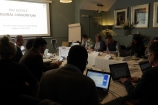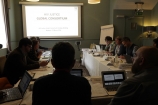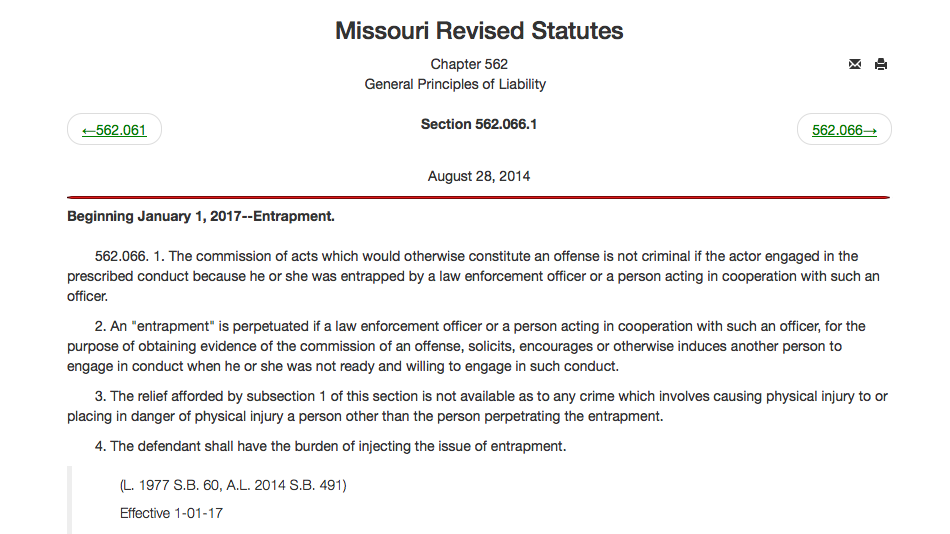Русский текст читайте, пожалуйста, ниже
On May 30 this year, a publication appeared in the Russian media with a sensational headline: in Dagestan, police stated that unknown men killed a woman after suspecting her of transmitting HIV to others.
Without any explanation of why the police would claim knowledge of a motive when the killers are unknown and without any verification of the claim that the woman transmitted HIV or even knew of her HIV status, the story was reproduced with the same allegations in over 30 Russian newspapers, and even made it to the UK right-wing tabloid, The Daily Mail.
Although the men were unnamed, the publications disclosed the identity of the murdered young woman as Tangaru Ramazanova, 25, from the city of Kizlyar in Russia’s southwestern Republic of Dagestan.
According to the police, she was beaten and stabbed repeatedly. She was found with her body wrapped in plastic and dumped close to the Terek River. Rather than focusing on the brutality of her murder, the stories focused on her alleged HIV status and cast aspersions against her moral character.
No report examined whether she actually was HIV-positive or whether the allegations were, in fact, true.
No report discussed concepts of mutual responsibility or safer sex or, most notably, countered the narrative that legitimized her murder.
Underlying the human tragedy for Tangaru and her family is Russia’s stigmatizing Article 122 which, in direct contradiction to global recommendations on HIV and the law, characterizes sexual contact involving a person living with HIV as a criminal act on the part of the person living with HIV unless proven otherwise. This national law, as in 72 other countries, creates a legal and social environment within which a person who is HIV-positive faces assumptions that she has somehow brought any violent or damaging actions upon herself.
This case in Dagestan is not an isolated event in which violence against women, or violence specifically against women (apparently) living with HIV, is publicly justified in the North Caucuses.
In this region of Russia alone, women’s NGOs and individual women’s rights activists report that women have been victims of ‘honour killings’, bride kidnappings, forced and child marriage and other traditional practices for the past 20 years, exacerbated by a climate of lawlessness, impunity and corruption. Norms, upholding patriarchy, deny women and girls full legal personhood for their entire lives, deprive them of property and inheritance rights, enshrine men’s control over women’s lives and bodies, and treat many forms of violence against women as permissible and justified ‘punishment’.
Mari Davtyan, a Human Rights Lawyer working on issues of violence against women in Russia, describes the connections between this murder, HIV stigma, and patriarchal control:
“Taking into account the experience of my colleagues there, there is a suspicion that a possible HIV status is just a horror story, which can justify the killing of women. There allegation communicated by the source of the media report that she was killed for transmitting HIV to somebody has now become a comfortable story, defining an approach to the investigation, looking for an excuse for the criminal. So called ‘honour killings’ are not always ‘honour killings’, as it is men alone who decide in the North Caucasus whether it is an honour killing or not. I’m pretty sure that the killer(s) will not be found.
The horror is that that the woman was completely dehumanised, because someone who has HIV is not (perceived to be) a person, and thus we are not looking for someone who infected or killed her. This is only possible in a relation to a woman; a man cannot be punished for the same thing. Women living with HIV are exposed to strong stigma, especially in the North Caucasus. In Dagestan, the public disclosure of her name is a great stigma on the family. It demonstrates well that, if a woman has HIV, one can justify anything, from shaming to killing. In the eyes of society, a woman (with HIV) is vicious, not a man.”
Outside the North Caucus region, a similarly concerning case took place in Moscow. The media published a story on a group rape of a young HIV-positive woman who pleaded with the perpetrators to stop as she had HIV. Rather than a story about the crime of rape, the media focus was on the HIV status of the rape survivor. There is no reason other than HIV stigma that could make journalists present this case, not as a rape case, but as a story focused on the potential harm faced by the perpetrators. Some of the media reports go so far as to claim that all of the perpetrators tested HIV-positive after the rape, but there is no analysis or confirmation of this. Instead, the media focused on whether the woman might be culpable for potentially transmitting HIV to her attackers, as HIV transmission is punishable, with up to eight years in prison for infecting two or more persons, under Article 122 of the Russian Criminal Code.
In both of these recent cases, stigma around HIV proved stronger than all the horror of the facts: the readers’ attention is switched to the girls’ behaviour and possible – not proved – risk to male “others.” In Tangaru Ramazanova’s murder, the killing is ‘justified’ by claims that the killers were ‘provoked’ by her because of an assumption that she lived an “immoral” lifestyle. Like the woman raped in Moscow, Tangaru, who can no longer speak for herself, is presented as a contagious person who transmitted HIV to others.
The narrative about both women serves to reduce the severity of punishment deemed appropriate for the perpetrators and to reduce the pressure on the police to identify or charge the perpetrators. At the same time, the narrative limits any space for discussions of the effects of HIV-related stigma and discrimination multiplied by gender inequality.
HIV stigma is so great in Russian societies that it becomes a tool to further control and terrorize women. The particular beliefs in traditional societies about women’s lower status and their obligation to symbolize family and community morality, combined with HIV stigma, becomes deadly.
The focus of Russia’s HIV response should be on ending deaths, stigma, discrimination and suffering. However, the power of HIV stigma is that it does not matter who committed the crime when the police, the killers and the media, all are convinced that people living with HIV are bad, immoral people. HIV stigma appears to justify murder.
HIV-specific laws, such as Russia’s Article 122, cement a stigma-laden view of people with HIV within the criminal code. Here, gender inequality and the HIV criminalisation law come together to create this dangerous environment, where violent acts target a specific group: women living with HIV — because they are women and they live with HIV.
Russia’s HIV-specific law contributes much to this stigma; rather than empowering women to enjoy human rights, this law victimizes, oppresses and endangers women; rather than offering women protection and justice in the face of violence, this law legitimizes their murder.
Evgenia Maron is the HIV Justice Network’s EECA Consultant
ВИЧ-стигма: терроризируя женщин в российских традиционных общинах
30 мая этого года в российских СМИ появилась публикация с сенсационным заголовком: в Дагестане полиция заявила, что неизвестные мужчины убили женщину, подозревая её в распространении ВИЧ.
Без каких-либо объяснений, почему полиция утверждает, что знает мотив, когда убийцы неизвестны, без какой-либо проверки информации, что женщина передала ВИЧ или вообще знала о своём ВИЧ-статусе, историю с такими же обвинениями воспроизвели более 30 российских газет, она даже попала в таблоид правого толка в Великобритании, The Daily Mail.
Хотя мужчины остались неназванными, в публикации раскрывается личность убитой молодой женщины: Тангару Рамазанова, 25 лет, из города Кизляр на юго-западе российской республики Дагестан.
По данным полиции, её многократно избивали и резали. Она была найдена выброшенной неподалёку от реки Терек, тело, завёрнутое в пластик. Вместо того, чтобы говорить о жестокости её убийства, новости были сосредоточены на её предполагаемом ВИЧ-статусе и выдвигали обвинения в аморальности её репутации.
Ни в одной истории не изучался вопрос, была ли она ВИЧ-позитивной на самом деле, были ли эти утверждения, по сути, верными.
Ни в одной истории речь не шла о концепции взаимной ответственности или о безопасном сексе, в первую очередь, этому противопоставлялся нарратив, который оправдывал её убийство.
В основе человеческой трагедии Тангару и её семьи – российская стигматизирующая статья 122, которая прямо противоречит глобальными рекомендациями по ВИЧ и законодательству, характеризуя сексуальный контакт с участием человека, живущего с ВИЧ, как преступное деяние со стороны человека, живущего с ВИЧ, если не доказано иное. Такое национальное законодательство, как и законы ещё 72 стран, создаёт правовую и социальную среду, в которой человек, который является ВИЧ-позитивным, сталкивается с подозрением, что она каким-то образом осуществила какие-то насильственные или прочие наносящие ущерб действия.
Этот случай в Дагестане не является единичным случаем, в котором насилие в отношении женщин, или насилие конкретно в отношении женщин (предположительно), живущих с ВИЧ, публично оправдывается на Северном Кавказе.
Только на основе данных из этого региона России, женские НГО и активисты, которые защищают права женщин, сообщают, что женщины были жертвами “убийств чести”, похищений невест, брака без согласия и детского брака и других видов традиционных практик за последние 20 лет, усугубляется обстановка беззакония, безнаказанности и коррупции. Нормы, поддерживающие патриархат, отказывают женщинам и девочкам в полной юридической право- и дееспособности на протяжении всей их жизни, лишают их прав собственности и наследования, закрепляют мужской контроль над жизнью и телом женщины, считают разные формы насилия в отношении женщин допустимыми, оправдывают «наказание».
Мари Давтян, юрист, который работает в области прав человека, в частности по вопросам насилия против женщин в России, описала связь между этим убийством, ВИЧ-стигмой и патриархальным контролем:
“Принимая во внимание опыт моих коллег там, есть подозрение, что предполагаемый ВИЧ-статус – просто страшилка, которая может оправдать убийство женщин. Подозрения, которыми источник делится со СМИ , что она была убита за передачу ВИЧ кому-то, теперь становятся удобной историей, которая определяет подход следствия, ищется повод для оправдания преступника. Так называемые “убийства чести” – не всегда “убийства чести”, так как только мужчины на Северном Кавказе решают в одиночку, является ли это “убийством чести” или нет. Я вполне уверена, что убийца(ы) не будет(ут) найден(ы).
Ужас в том, что, что женщина была полностью дегуманизирована, потому что кто-то, у кого есть ВИЧ, не воспринимается как человек, не является человеком, и, таким образом, мы не ищем тех, кто заразил или убил её. Это возможно только по отношению к женщине; мужчина не может быть наказан за то же самое. Женщины, живущие с ВИЧ, подвергаются сильной стигматизации, особенно на Северном Кавказе. В Дагестане, публичное раскрытие её имени – очень большое клеймо для семьи. Это хорошо демонстрирует, что если у женщины есть ВИЧ, можно оправдать что угодно, от посрамления до убийства. В глазах общества, женщина (с ВИЧ) порочна, но не мужчина.”
За пределами Северного Кавказа такой же вопиющий случай произошёл в Москве. СМИ опубликовали историю о групповом изнасиловании молодой ВИЧ-позитивной женщины, которая умоляла преступников остановиться, так как у неё была ВИЧ-инфекция. Вместо того, чтобы опубликовать новость о преступлении – изнасиловании, – в центре внимания СМИ оказался ВИЧ-статус женщины, пережившей изнасилование. Нет никаких оснований, кроме ВИЧ-стигмы, которые могли бы заставить журналистов представить этот случай не как случай изнасилования, а как историю с акцентом на потенциальном вреде, с которым столкнулись преступники. Некоторые из сообщений СМИ заходят настолько далеко, чтобы утверждать, что все преступники оказались ВИЧ-позитивными после изнасилования, но нет никакого анализа или подтверждения этого. СМИ сосредоточены на том, может ли женщина быть виновной в потенциальной передаче ВИЧ нападавшим, поскольку передача ВИЧ наказуема сроком до восьми лет тюрьмы за заражение двух или более лиц в соответствии со статьёй 122 Уголовного кодекса Российской Федерации.
В этих недавних случаях, стигма в отношении ВИЧ оказалась сильнее, чем весь ужас фактов: внимание читателей переключилось на поведение девушек и возможных – не доказанных, – рисков для “других” мужского пола. В деле Тангару Рамазановой, её убийство “оправдывается” утверждениями, что убийцы были “спровоцированы” ею из-за предположения, что она вела “аморальный” образ жизни. Как женщина, изнасилованная в Москве, Тангару, которая уже не может высказаться от собственного имени, предстаёт как заразный человек, который передавал ВИЧ другим.
Два этих нарратива о женщинах служат для уменьшения тяжести наказания, которое целесообразно для преступников, и снижения давления на полицию, чтобы та нашла и привлекла преступников к ответственности . В то же время, эти нарративы ограничивают любое пространство для обсуждения последствий стигмы и дискриминации в отношении ВИЧ, умноженной на гендерное неравенство.
Стигматизация ВИЧ настолько велика в российском обществе, что становится инструментом для ещё большего контроля и террора в отношении женщин. Конкретные верования в традиционных обществах о более низком положении женщины и её обязанности символизировать семью и мораль общества в сочетании с ВИЧ-стигмой становятся смертельными.
В центре внимания мер по борьбе с ВИЧ в России должно быть прекращение смертей, стигмы, дискриминации и страданий. Тем не менее, сила стигмы в отношении ВИЧ в том, что не имеет значения, кто совершил преступление, когда полиция, убийцы и средства массовой информации, все убеждены в том, что люди, живущие с ВИЧ, – это плохие, безнравственные люди. Стигматизация ВИЧ в таком случае оправдывает убийство.
ВИЧ-специфические законы, такие как российская статья 122, накрепко цементируют предвзятое восприятие людей, живущих с ВИЧ, в рамках уголовного кодекса. Здесь гендерное неравенство и криминализация ВИЧ соединяются воедино, создавая эту опасную среду, где насильственные действия нацелены на определённую группу: женщины, живущие с ВИЧ, – потому, что они женщины, и потому, что они живут с ВИЧ.
ВИЧ-специфическое законодательство России вносит серьёзный вклад в эту стигму; вместо того, чтобы развивать потенциал женщин, чтобы они могли пользоваться своими правами, этот закон делает женщину жертвой, подавляет и ставит её в опасность; вместо того, чтобы предложить женщине защиту и правосудие в ситуации насилия, этот закон оправдывает её убийство.
Евгения Марон является консультантом сети “Правосудие и ВИЧ” в регионе ВЕЦА


















 To try and understand why the story was published, I first asked colleagues in South Africa on Facebook.
To try and understand why the story was published, I first asked colleagues in South Africa on Facebook.